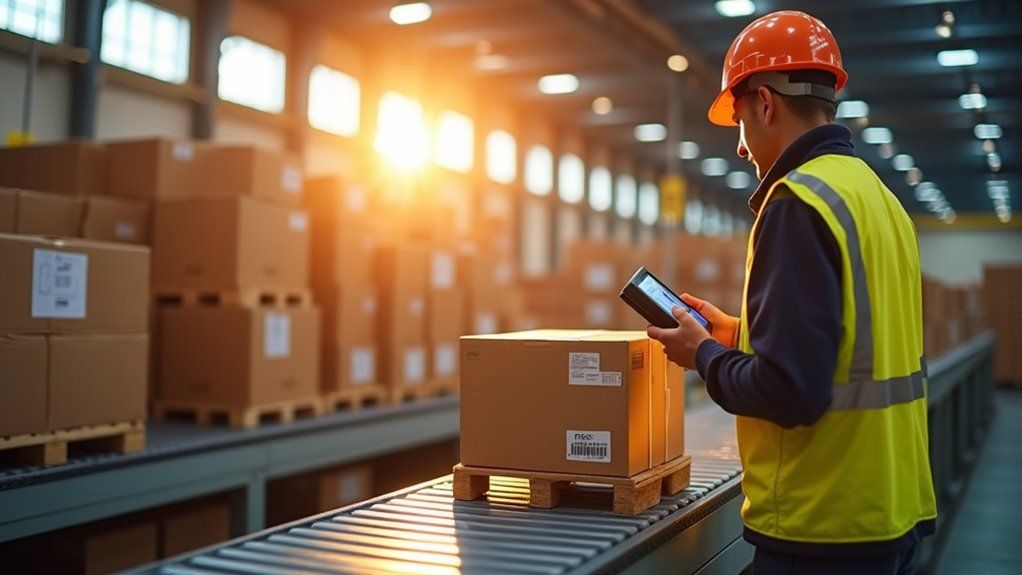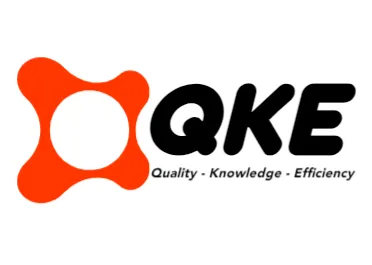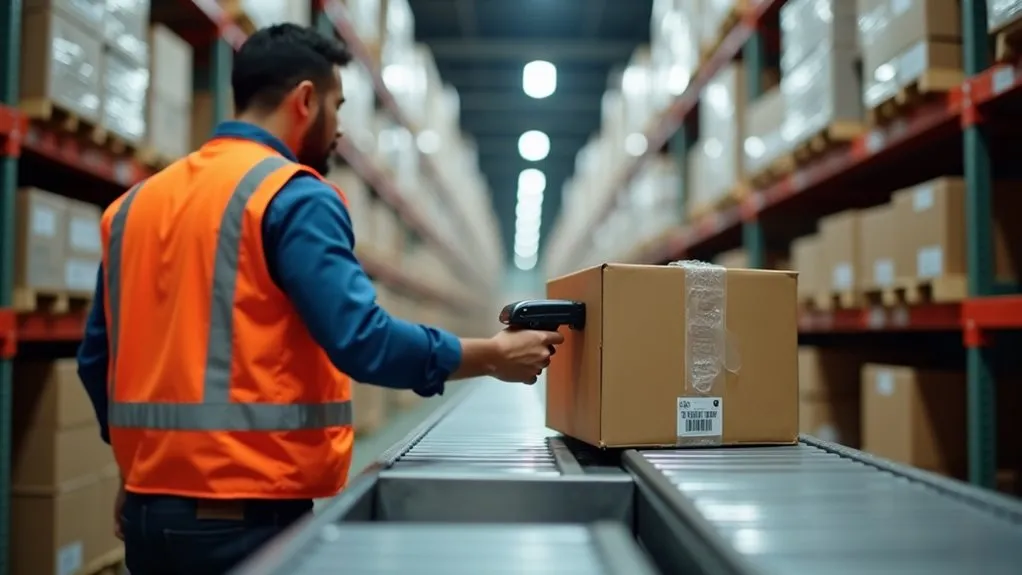Track and Trace in logistics refers to a system that provides complete visibility and transparency across the supply chain. It monitors real-time locations and records historical paths of items using unique identifiers like barcodes or RFID tags. This enables precise tracking at key stages such as production, warehousing, and transit. It streamlines operations through automated data collection and enhances efficiency. Explore further to uncover deeper insights into its transformative impact on logistics.
Key Takeaways
- Track and Trace in logistics provides full visibility of items across the supply chain.
- It monitors real-time locations and records historical paths of goods.
- Unique identifiers like barcodes are used for item identification and scanning.
- It enhances efficiency by optimizing routes and reducing delays.
- Technologies like RFID and GPS enable precise tracking and monitoring.
Understanding Track and Trace Basics
Track and Trace technology serves as a critical system in logistics, designed to pinpoint the current and past locations of items such as products, materials, and assets throughout the supply chain. Under the Basic Concepts, it focuses on providing full visibility and transparency by monitoring real-time locations and recording historical paths. Unique identifiers, like barcodes, are assigned to items, scanned at key stages—production, warehousing, transit—and logged into central databases for stakeholder access, creating a detailed audit trail. This system also automates the collection and recording of goods information to streamline supply chain operations automates goods tracking.
The Historical Evolution of Track and Trace began with pioneering carriers like UPS and DHL, who introduced it to offer parcel insights to customers. Over time, its scope expanded across industries—pharmaceuticals, retail, automotive—covering raw materials to finished goods. This strategic tool enhances operational efficiency, security, and customer satisfaction by identifying bottlenecks and ensuring timely updates, solidifying its role as an indispensable asset in modern supply chain management.
Key Technologies Behind Track and Trace

Modern logistics relies heavily on sophisticated systems to ensure visibility and efficiency across the supply chain, building on the foundational concepts of monitoring and recording item movements. Key technologies like barcodes and QR codes provide precise inventory tracking through visual data, while RFID uses radio waves for non-line-of-sight identification, offering superior efficiency in Technology Comparisons. GPS delivers real-time location tracking for vehicles and shipments, and IoT sensors add depth by monitoring conditions like temperature or shock.
These systems depend on strategic Integration Methods to connect with Warehouse Management Systems (WMS), Enterprise Resource Planning (ERP), and Transportation Management Systems (TMS). Cloud computing and cellular networks (5G/LTE) enable seamless data flow, while emerging tools like blockchain ensure secure tracking. AI and analytics further refine operations through predictive insights. Collectively, these technologies create a robust framework for track and trace, optimizing supply chain control with precision and scalability.
Benefits of Track and Trace in Logistics

The implementation of track and trace systems in logistics delivers substantial advantages across multiple facets of supply chain management. These systems provide end-to-end visibility, enabling real-time monitoring of goods and proactive issue resolution. This results in an Efficiency Boost by optimizing transportation routes, reducing fuel costs, minimizing delays, and streamlining workflows, ultimately lowering operational expenses.
Moreover, track and trace enhances customer satisfaction through transparency, offering real-time order updates and accurate ETAs. This reliability fosters trust and strengthens Customer Loyalty, while reducing support workload by empowering clients with tracking information. Additionally, these systems bolster security by preventing theft and ensuring compliance with regulations, particularly for sensitive goods. They also support data-driven decisions by collecting insights for supply chain optimization and identifying inefficiencies. Collectively, track and trace solutions drive strategic improvements, ensuring a more controlled, cost-effective, and customer-focused logistics operation with lasting competitive benefits.
Challenges in Implementing Track and Trace Systems

Logistics professionals recognize that while track and trace systems offer significant advantages, their adoption is not without obstacles. Integration complexity poses a major hurdle, as compatibility issues with existing ERP and legacy software often create data silos. High initial setup costs for hardware like RFID tags and IoT devices, coupled with ongoing maintenance and training expenses, strain budgets, particularly for SMEs.
Moreover, data management challenges, including handling vast data volumes and ensuring accuracy, complicate implementation. Cybersecurity threats and privacy concerns necessitate strict Regulatory Compliance with laws like GDPR, adding another layer of difficulty. Technological limitations, such as connectivity issues in remote areas, further impede real-time tracking. Scalability Issues also arise, as systems must adapt to growing business needs without compromising efficiency. Strategically addressing these barriers through careful planning and investment is essential for successful deployment of track and trace solutions in logistics operations.

 Tiếng Việt
Tiếng Việt 日本語
日本語 中文 (中国)
中文 (中国) 한국어
한국어
